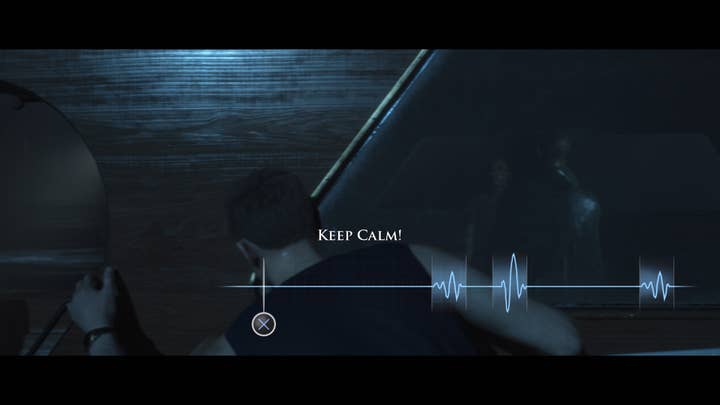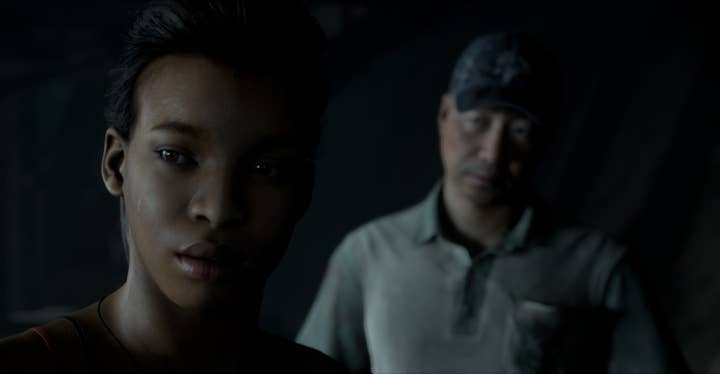Supermassive Games' top three rules for narrative-driven horror
At Develop:Brighton, The Dark Pictures Anthology creative director Will Doyle discussed designing meaningful choices
In the last few years, Supermassive Games has positioned itself as a standout maker of choice-led interactive games that let players write their own story.
With titles such as Until Dawn, The Quarry, and The Dark Pictures Anthology under its belt, the Guildford-based studio has reached critical acclaim for its narrative design and branching storylines.
The Dark Pictures Anthology is a series of cinematic horror stories that Supermassive releases annually, starting with 2019's Man of Medan. The games don't follow one story, the anthology can be enjoyed in any order, with each of the three titles being a standalone story.

Some insight on the series was shared at Develop:Brighton 2022 by Will Doyle, creative director on The Dark Pictures Anthology. During a talk titled "The Dark Pictures Anthology: Crafting Interactive Narrative Games," Doyle explored the processes involved in making story-driven adventures, and how the studio works to create different types of horror in the collection of games.
Creating consequences
Each game in the anthology features a series of characters, all of which are playable at some point, rather than just following the story of one single protagonist. Each separate character has their own story and players can choose their fate, which affects the game moving forward.
"In a way, you're playing as a director rather than a character in the story," Doyle said. "It offers a lot of freedom -- if you don't like one of the characters, you can just kill them.
"No matter how many people live or die [in-game], the story is designed to give you a fairly decent play experience. If a character dies, the story just rolls on."
Doyle presented an example of this in action. A player moves through a part of the game, exploring an area, solving puzzles, but at some point, they will reach a decision point. This is resolved with some kind of player input, be it a multiple choice decision or a quick time event that affects the story if the player succeeds or fails at it.
"This creates consequences. It pushes you down a different path on the plot graph or it flips a switch that affects something later on in the story."

Three rules of choice
Doyle listed what he considers the three main rules that developers should follow when it comes to creating potential life or death decisions for a player, starting with fairness .
In earlier examples of role-playing games -- many of which have inspired Supermassive's design -- some choices were deemed unfair, in that the player could encounter a game-ending scenario with little to no explanation. This is something that Doyle advised to avoid.
"The game must offer fair choices and that I don't just arbitrarily die after making the wrong choice," he said. "Bad moves should be foreshadowed in some way, and there is an element of skill to my decision making."
"It's important to present contrasting options -- there's no point presenting a choice that effectively fulfils the same purpose on each side"
He added later on: "It's really important to make the sense of a choice clear. So perhaps you can use NPCs to actually spell out what's at stake in a dialogue before you make your choice. It's important to present contrasting options -- there's no point presenting a choice that effectively fulfils the same purpose on each side."
Doyle went on to say that it's best if those contrasting choices don't have a clear 'right' answer, to leave players torn between the options.
The next rule is drama. The story has to be compelling, and there has to be conflict and dramatic pacing, leading to a satisfying ending.
"It helps if your players feel like they're involved in the most important developments of the story," Doyle said. "If you let the main story just occur and only shape choices around its minor branches, you're taking away the players ability to shape a dramatic parity."
While drama is key, a designer should avoid options that can completely derail the story the game is trying to tell.
"It might sound really cool to give players an opportunity to kill the main antagonist in the first scene but really, it's probably just robbing your story," he said. "Try to make choices that affect characters where possible, rather than just being world actions."
Doyle added that not every choice has to be completely extreme life-and-death situations -- some can be smaller decisions that still keep a player engaged and feeling like they have control over the narrative.
"We've found that offering minor flavourful choices alongside those prevent [the player] from suffering fatigue," he said. "And more importantly, it lets you roleplay your characters."

The final rule is agency -- so that players feel as though their choices are making a sizable impact on the story, and not just watching events unfold regardless of their input.
"It's important to make consequences responsive to the choice or action that determines that," Doyle explained. "So, if I choose to hide in a closet, my character should, as soon as possible, go and hide in the closet after I made that choice. f I choose to say something, the phrase that I've chosen should come up in that conversation as soon as possible, not right at the end."
Doyle went on to explain that when a game is branching, it's important to signal it on the interface somehow. He mentioned Until Dawn, which uses a butterfly effect animation to show when the player is making an important decision. In The Dark Pictures Anthology, this is communicated to the player with crows flying across the screen.
"Without these tools, players often just assume that choices don't really matter," he said. "When we tested Hidden Agenda, people would say their choice doesn't matter in the game even though they'd only seen one part of it. When we added that ripple effect interface, we didn't get that feedback anymore."
Rounding off the talk, Doyle shared some tips on implementing horror, and using things such as reveals and jumpscares in a way that doesn't become predictable.
"Every time you see something scary it loses its terror, so try and use slow reveals of your monster or whatever your source of fear is," he said.
"[Jumpscares] are quite divisive; if you overuse them, people complain, if you don't use them at all, people aren't as scared. So we find they work best when you build up tension, then just before the scare happens, you have a split second where you think 'oh it's safe' and then it suddenly hits you when you're not expecting it."
He concluded: "Horror games are about building, and then breaking suspense, so let your audiences know when they should be scared. The protagonist is a vessel for the viewer. You live through them on the screen in some way, so try to engineer moments where they're experiencing real fear."

